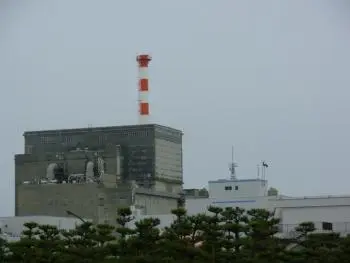
A gas-cooled nuclear reactor is a type of nuclear reactor in which gas, typically helium or carbon dioxide, is used as the primary coolant to remove heat produced by nuclear fission in the reactor core.
Unlike water-cooled reactors, which are more common, gas-cooled reactors have some distinctive characteristics that make them attractive in certain applications.
The GCR design is based on the idea of using an inert gas as a coolant to transfer heat from the reactor core through heat exchangers, where it is converted into electrical energy or used for other purposes, such as steam generation. in a power plant. Additionally, GCR reactors often use graphite moderators to slow down neutrons, allowing for more efficient fission.
In essence, the GCR combines the benefits of gas cooling with graphite neutron moderation for optimal performance.
Operation of a gas-cooled nuclear reactor
The operation of a gas-cooled reactor can be broken down into several key steps:
-
Nuclear fission: As in other types of nuclear reactors, nuclear fission is the main process in a GCR. Heavy atomic nuclei, such as uranium-235 or plutonium-239, split into smaller nuclei when bombarded by neutrons. This process releases a large amount of energy in the form of heat.
-
Moderation and control: The neutrons produced in fission must be moderated or slowed down to maintain the chain reaction. In GCR reactors, graphite is used as a moderator to achieve this. Additionally, nuclear reaction controls, such as neutron control rods, are used to regulate the fission rate and ensure that the reactor operates safely.
-
Heat transfer: The heat generated in the reactor core is transferred to the cooling gas, usually helium or carbon dioxide. This hot gas is transported through heat exchangers that are in contact with water or another secondary fluid. Heat transfer converts water or secondary fluid into steam, which is then used to spin turbines and generate electricity.
-
Electricity generation: Electricity is generated by a generator coupled to turbines driven by the steam produced. This electricity is then transmitted to the electrical grid and distributed to consumers.
-
Cooling cycle: After heat transfer, the coolant gas is cooled and recycled back to the reactor core, where the cycle repeats.
Advantages
Gas-cooled nuclear reactors offer several significant advantages compared to other reactor designs, making them attractive for various applications:
-
Higher thermal efficiency: Due to the use of an inert gas as a coolant, GCR reactors can operate at higher temperatures compared to water-cooled reactors, increasing thermal efficiency and power generation.
-
Greater safety: The gases used as refrigerants in GCRs are non-corrosive and non-flammable, which contributes to a safer environment. Additionally, GCR reactor designs often include passive safety systems that can mitigate the effects of an accident.
-
Less radioactive waste: GCR reactors typically produce less high-level radioactive waste compared to other designs, making them easier to manage and store long-term.
-
Fuel flexibility: Gas-cooled reactors can use a variety of nuclear fuels, including enriched uranium, depleted uranium and plutonium, providing flexibility in fuel supply.
-
Various applications: In addition to the generation of electrical energy, this type of reactor can be used in industrial applications, such as hydrogen production or water desalination.
Disadvantages
Despite the aforementioned advantages, gas-cooled nuclear reactors also present important drawbacks and considerations:
-
Initial costs: Construction of GCR reactors can be expensive due to high-strength materials and design complexity.
-
Operational Safety: Although GCR reactors have inherent safety features, radioactive waste management and operational safety remain critical concerns.
-
Technological development: Despite advances in the design of gas-cooled nuclear reactors, additional technological development is still needed to reach their full potential and ensure safety.
Origin and evolution of the development of GCRs
According to the classification established by the United Nations International Atomic Energy Agency (IAEA), this category of reactors includes those known as advanced gas reactors, or AGR (acronym for Advanced Gas-cooled Reactor in English), as well as reactors Magnox (derived from Magnesium Non-OXidising) from British technology.
In the history of nuclear energy, a type of GCR reactor of French origin is also mentioned, called UNGG (for its French acronym, Uranium Naturel Graphite Gaz). However, the latter is considered completely obsolete, and there is currently no operational nuclear power plant in the world using this design. The UNGG reactors represented the first generation of nuclear reactors in France and emerged following the events of World War II.
The fundamental differences between the advanced gas reactor (AGR), Magnox and UNGG models lie in the type of fuel used and the coating that surrounds the fuel pellets. The Magnox and UNGG reactors, developed simultaneously, are the oldest designs and share similarities. Both use natural uranium as nuclear fuel. The distinction between them lies in the cladding material surrounding the fuel pellets: Magnox reactors use a magnesium-aluminum alloy, while UNGG reactors use a magnesium-zirconium alloy.
In contrast, the new generation of GCR reactors, called ACR (Advanced Gas-cooled Reactor), use enriched uranium as fuel. This difference in fuel type is a significant advance in cooled gas reactor technology, as enriched uranium allows for more efficient performance in terms of power generation.